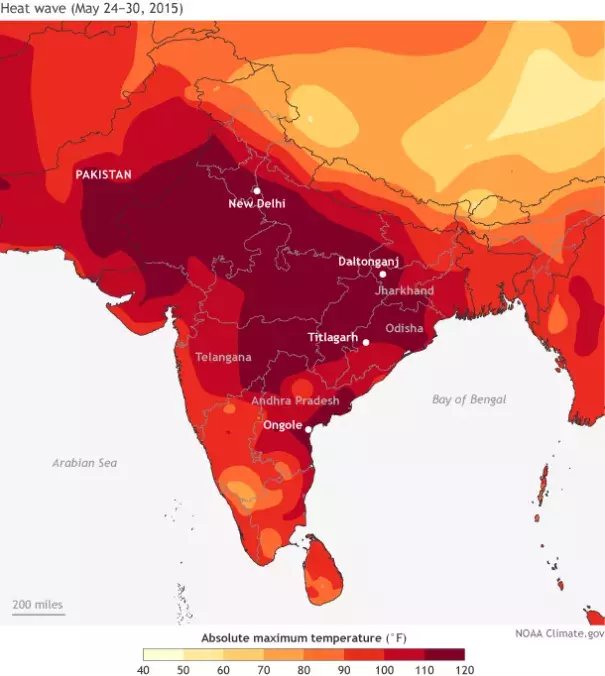India heat wave kills thousands

One cause of this extreme heat wave has been unusual northwesterly winds. These anomalous northwesterlies have overpowered the moist southerly winds that typically come off the water and kept pre-monsoon showers firmly offshore. This deviation from the normal winds has allowed hot air from the desert areas to the northwest to spread over much of the country.
A meteorologist from the India Meteorological department called this phenomenon a “heat bomb” from Pakistan as that is where the hot air mass originated. Eventually though, the northwesterly winds relaxed and turned southwesterly and the onset of the Indian Monsoon occurred around June 5th in the Kerala state in southwestern India. The winds will usher in cooler and rainier conditions for locations in the south. The monsoon should arrive to those areas in southeastern India hardest hit by the heat wave by the second week of June, on average.
In the future, though, according to the Intergovernmental Panel on Climate Change (IPCC), more frequent and intense heat waves in Asia (including India) will negatively impact vulnerable communities and increase mortality. In fact, it is likely that heat waves already occur more often now in Asia than they did in 1950. In a future with high carbon emissions, it is likely that a maximum temperature that occurs once every 20 years will at least double in frequency (to a 1-in-10-year event) by the end of the 21st century. Research focusing solely on India also concludes that heat waves will last longer, be more intense and occur more often in the future (Murari et al., 2015).


